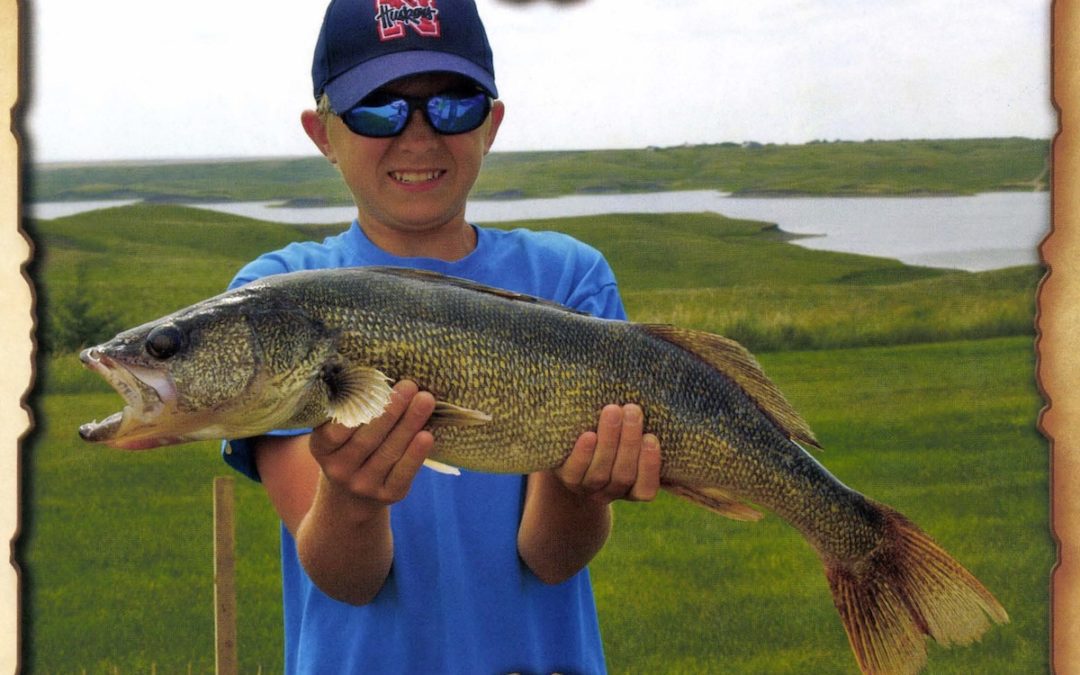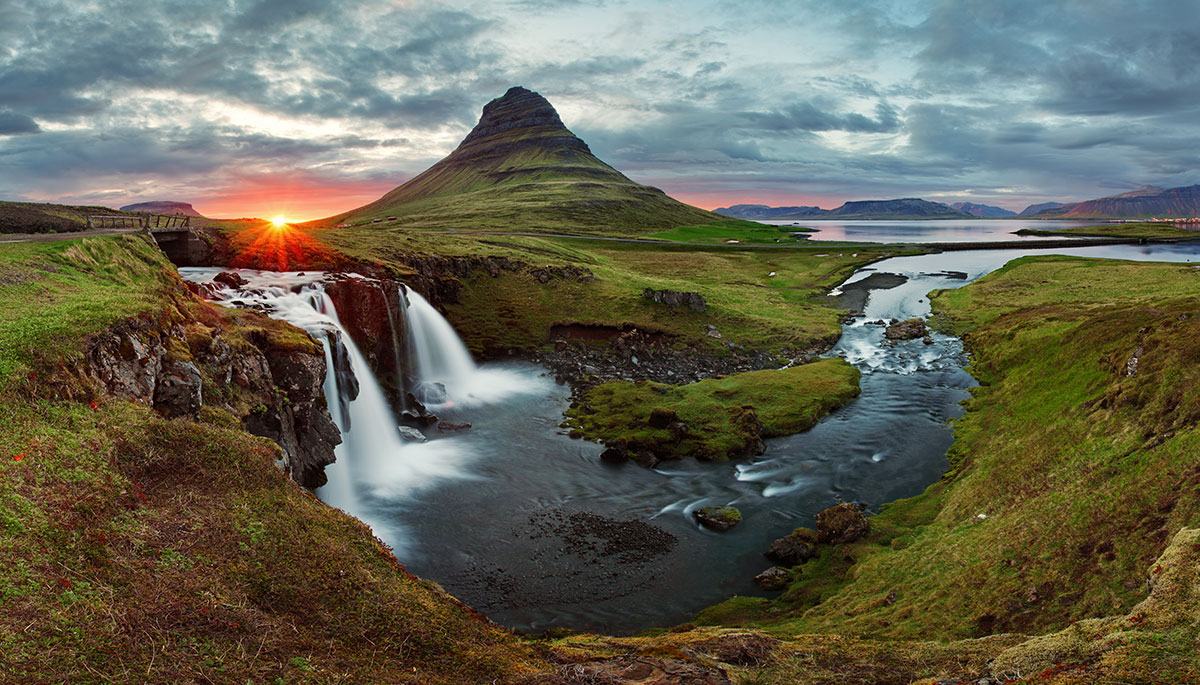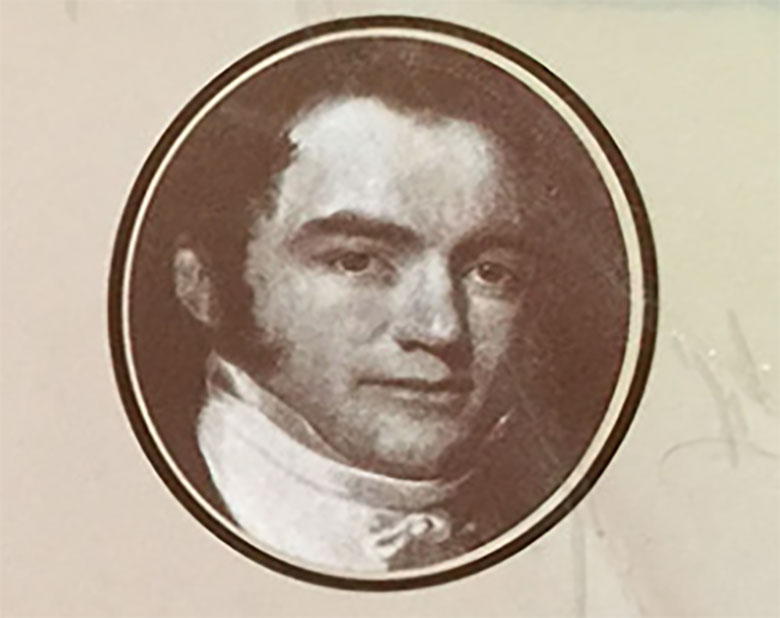At Cheyenne Ridge Signature Lodge, it’s the “other season” you don’t want to miss.
Hedy Lamarr was one of the most glamorous film stars of Hollywood’s “Golden Age.” Viennese by birth, she was invariably cast as a seductress of exotic origins and gained fame as filmdom ‘s “Love Goddess,” starring in 18 major motion pictures during the height of her career in the 1940s. Behind a beautiful face, however, lay an equally beautiful mind. Indeed, Ms. Lamarr could lay claim to having been a rocket scientist, not just figuratively, but literally.
During World War II, the single radio frequency used to control a torpedo could easily be jammed, a subject that Ms. Lamarr was familiar with as a result of her first marriage to an Austrian munitions manufacturer. It’s a fascinating story but the gist of it is that the mathematically and musically gifted Lamarr came up with the idea (based on fast-changing musical tunes) of frequency “hopping,” the random altering of frequencies at split-second intervals that created an encrypted signal practically impossible to scan or jam.

Everything about Cheyenne Ridge Signature Lodge is first class, from the cuisine in the spacious dining hall to the libations and camaraderie at the Horseshoe Bar.

While not employed during the war, this concept served as the basis for modern spread-spectrum technology that is still used by the military in defense communications as well as in today’s cellular phones. In 1997 the Electronic Frontier Foundation presented Ms. Lamarr with an award for her groundbreaking scientific work.
Who would have thought that a siren of the screen would also come up with a secret code? Sometimes the view is so spectacular in one direction that we fail to turn around and look the other way.
When it comes to South Dakota, the “view” that catches everyone’s eye, of course, is its great pheasant hunting. No other state is as identified with a single game species, and when the season kicks off, it’s a big grand opening where the colorful Mr. Rooster is always the star of the show.
I can think of no better place to hunt “America’s favorite gamebird” than Cheyenne Ridge Signature Lodge, located just north of Pierre, the state capital, and less than a half-hour ride from the Pierre Regional Airport.
Many hunting lodges describe their accommodations as “bunkhouse style” and their food as “hearty.” Nothing wrong with that at all, but such descriptors hardly do justice for what you’ll find at Cheyenne Ridge, the first lodge to ever receive a Beretta Trident rating.
There, you’ll find private guest rooms with premium hotel amenities and a cigar and cognac bar with — and, this is really cool — a bar surface made of ice. There’s also a well-equipped spa and fitness center that you’ll no doubt make use of after feasting on Chef Sean Finley’s acclaimed cuisine; from Wild Boar Ragout and Tuscan Style Ribeyes for dinner to pheasant salad sliders and spicy fish tacos for lunch. To top it off, dinner entrees are paired with outstanding wine selections.
Oh, yes, the hunting is great too.
Yet another thing that sets Cheyenne Ridge apart from many lodges are the extensive plantings and habitat improvements on some 4,000 acres of prime hunting land. Indeed, Cheyenne Ridge and other lodges that make similar efforts don’t receive enough credit for the conservation aspects of their operations, which create vast swathes of high-grade habitat that support both game and non-game species.
For hunters at Cheyenne Ridge, the result of these efforts is a diverse habitat that gives them a new look and fresh experience with every hunt. Couple that with some of the best guides and dogs in the state, and you can expect a great day, every day, from the time you lace up your boots to when you pull them off and settle into a comfy chair with a fine cigar and snifter of cognac at hand.
So, what happens when we turn around and look in another direction? Oddly enough, it’s an equally captivating view that happens to be right in front of the lodge: Lake Oahe, a 231-mile impoundment of the Missouri River and the fourth largest reservoir in the United States. With so much focus on the great hunting at Cheyenne Ridge, little attention has been paid to this impressive body of water and the trophy fishing it might have to offer, especially for the fly angler.
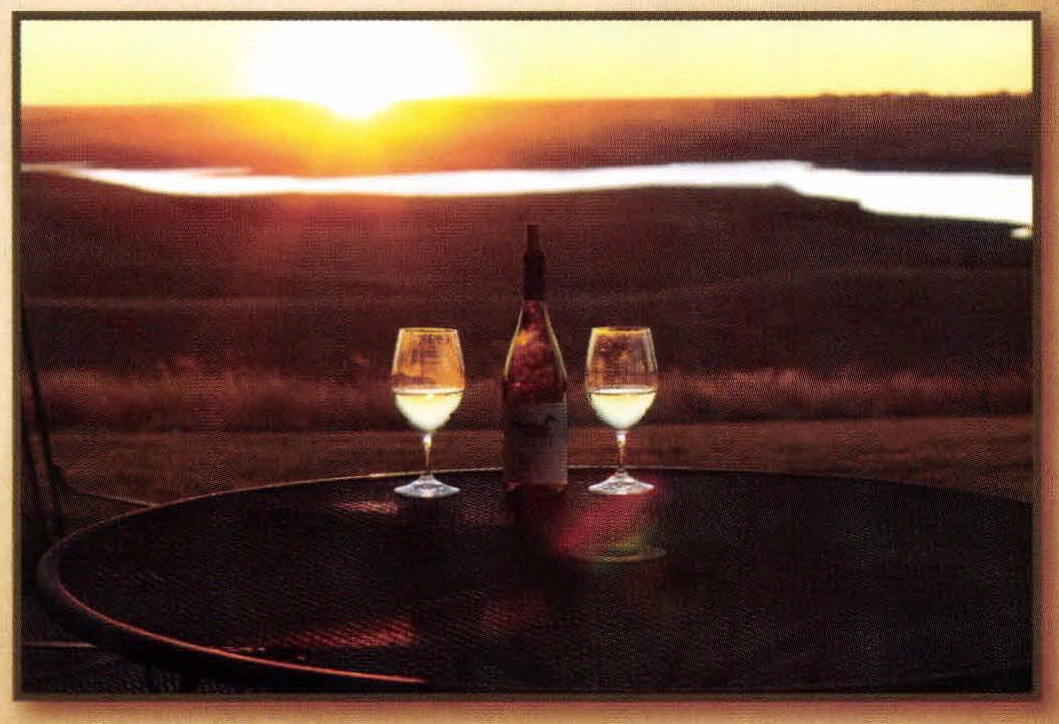
At day’s end, there’s a mesmerizing view of the wide Missouri from the patio.
Lake Oahe is known locally for its superb walleye fishing. For the fly-rodder, however, it’s smallmouth bass and northern pike that make this a world-class destination, all without the black flies and burnt campfire coffee.
It seemed a bit odd to be assembling a fly rod and not an over/under when I arrived at Cheyenne Ridge this past summer, but once out on the lake with my guide, it was easy to have visions of a big pike dancing in my head. The points of the lake push up into the valleys formed by the adjacent hills, creating a superb fly fishing environment, complete with rocky shorelines and shallow water with flooded timber.
When in a feeding mood, smallmouth aren’t highly selective, and I’ve had excellent success with balsa poppers, crayfish imitations and Clouser Minnows. I stayed with the poppers most of the time to experience the slashing top-water hits that give smallmouth their well-earned reputation.
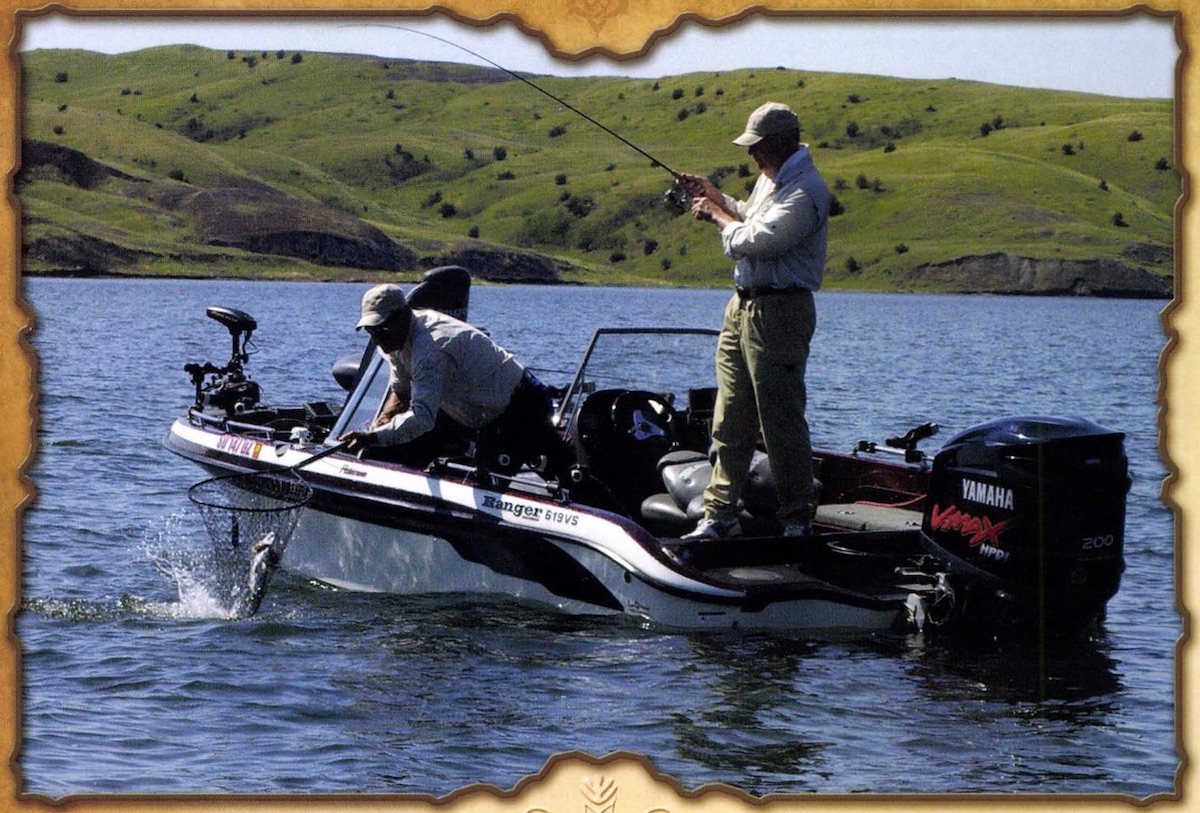
Walleye fishermen enjoy consistently good success on Lake Oahe.
As much as I enjoyed chasing smallmouth bass, catching a trophy northern pike was at the top of my wish list. For a predator that hammers its prey with unrestrained ferocity, pike can, nonetheless, be quite coquettish. More than a few times I had big fish come to within a few feet of my fly, then stop short. Strip the fly and the fish advances with it and your hopes soar, only to be disappointed once again. This is classic pike behavior, and I got plenty of the look-but-don’t-touch treatment.
In the immortal words of Captain Quint in the movie Jaws, what I needed was a bigger fly. Sean Finley had given me one of his favorite northern pike flies, a Spinner’d Minnow — eight inches of fish-attracting flash and bucktail — tied by Derek Filkins of Flymasters of Indianapolis.
About an hour after tying on this mega fly, we were fishing a rocky point in about four feet of water. I saw the pike move on the fly, and this time there was no hesitation. The fish measured 42 inches — about 15 pounds — an excellent pike in any book, especially on a fly rod.
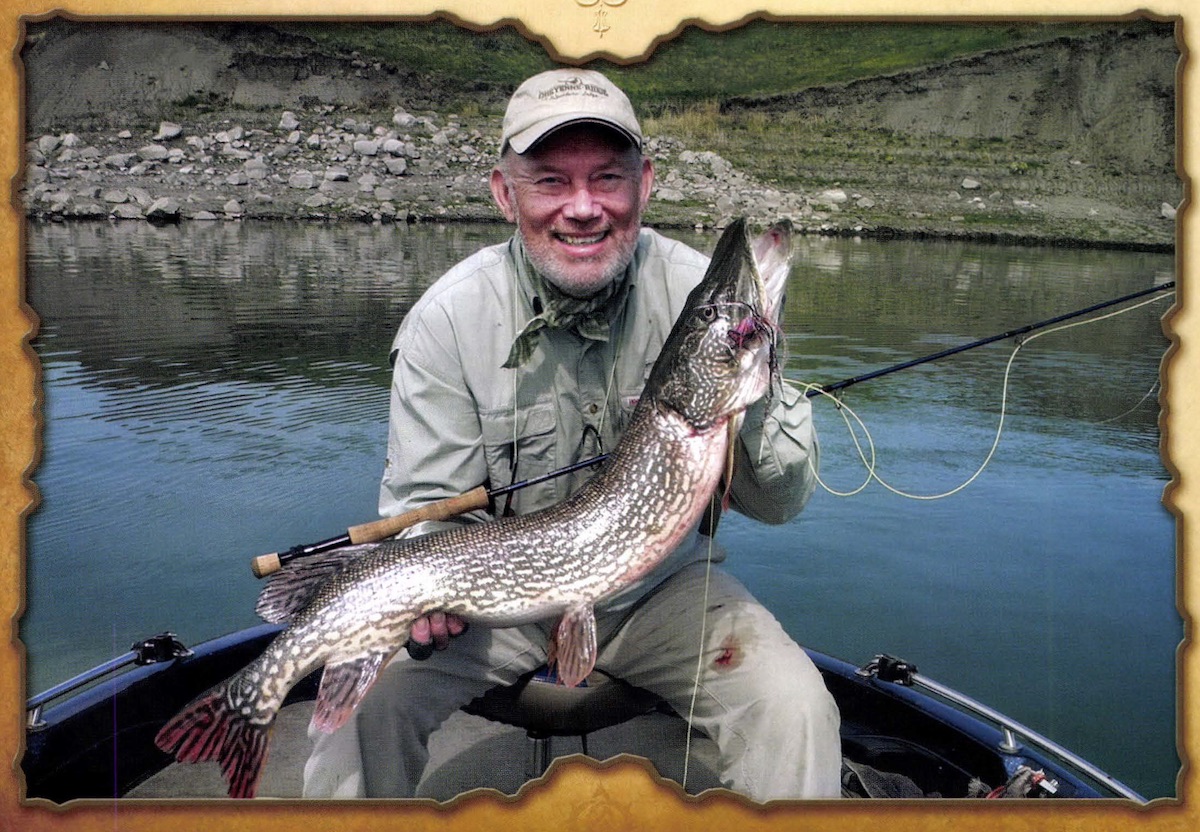
Doug Painter hefts the 15-pound northern pike he caught on a bucktail spinner combo.
There are more than a few waters that offer outstanding smallmouth and northern pike fishing, but few, if any, offer the lodge experience found at Cheyenne Ridge. Check with Sean Finley for the best time to head out. Typically, the action for northern pike heats up around May.
Creating a great lodge isn’t rocket science, yet I’ve been to many that had all the fixin’s, but were still missing the most important ingredient: a large measure of hospitality. That’s what makes the Cheyenne Ridge experience truly special, whether with shotgun or fly rod in hand.
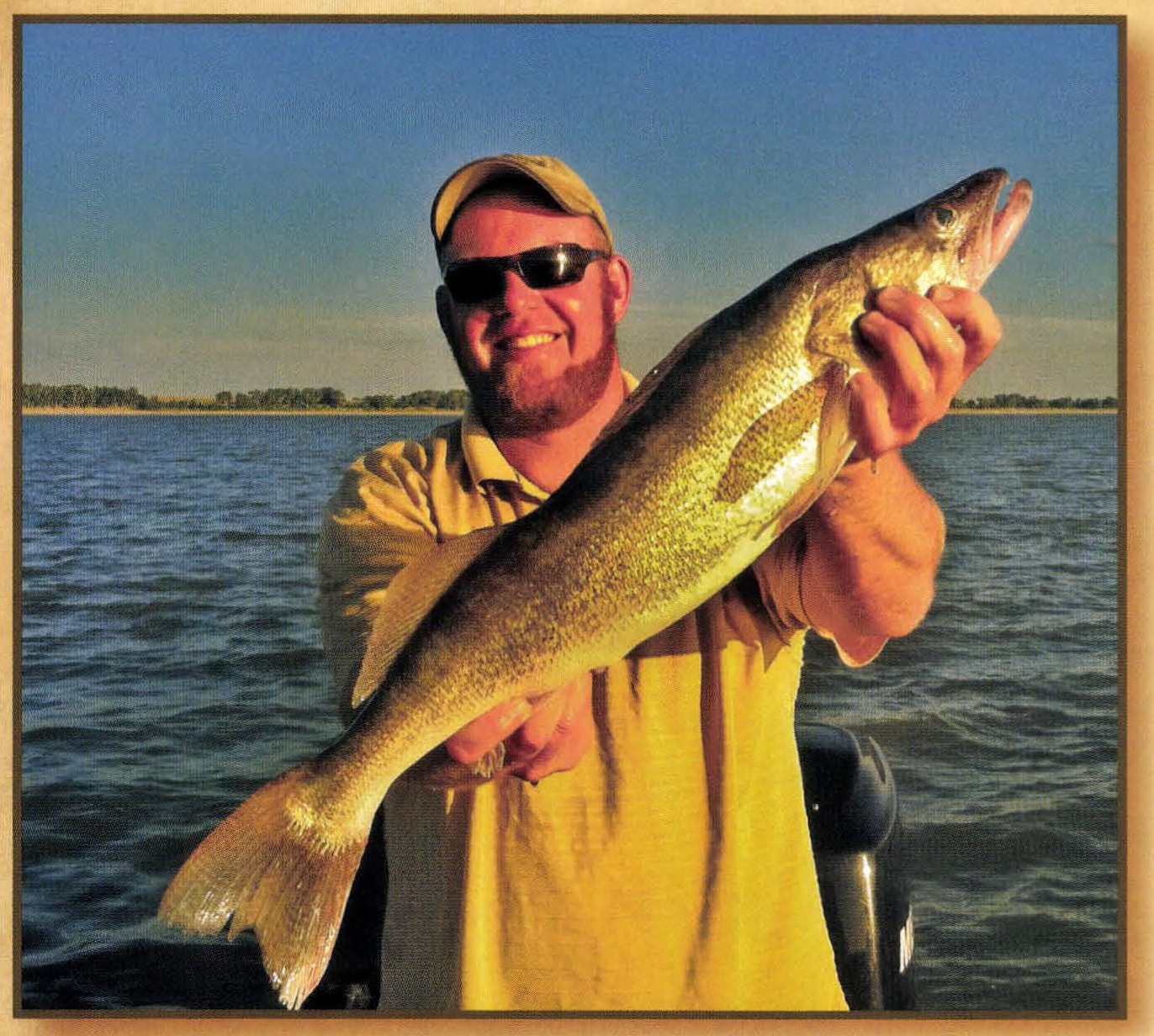
Although Doug Painter focused on fly fishing for northern pike, walleyes are the biggest draw for anglers young and old.
GEARING UP
For northern pike, you’ll need somewhat heavier tackle. I used a 9-weight Sage Xi2 for the pike, a saltwater rod well suited to the big water of Lake Oahe and big flies. For bass, I had a Sage BASS model in their smallmouth version, which comes with their excellent 290-grain floating line, a combination that was perfect for punching out bulky flies and poppers.
Pike are toothy critters, and I used 12 inches of American Fishing Wire in 17-pound test for the bite tippet. This nylon-coated, stainless steel wire is far more supple than hard mono or wire, allowing for a more natural movement of the fly. An Albright knot works well in attaching the wire to your tippet.
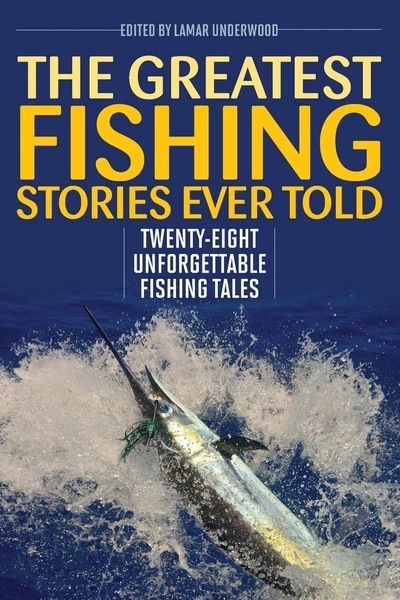 The Greatest Fishing Stories Ever Told is sure to ignite recollections of your own angling experiences as well as send your imagination adrift. In this compilation of tales you will read about two kinds of places, the ones you have been to before and love to remember, and the places you have only dreamed of going, and would love to visit. Whether you prefer to fish rivers, estuaries, or beaches, this book will take you to all kinds of water, where you’ll experience catching every kind of fish.
The Greatest Fishing Stories Ever Told is sure to ignite recollections of your own angling experiences as well as send your imagination adrift. In this compilation of tales you will read about two kinds of places, the ones you have been to before and love to remember, and the places you have only dreamed of going, and would love to visit. Whether you prefer to fish rivers, estuaries, or beaches, this book will take you to all kinds of water, where you’ll experience catching every kind of fish.
Read on as some of the sport’s most talented writers recount their personal memories of catching bass, trout, bluefish marlin, tuna, and more. Explore the Pacific with Zane Grey, as he fights a 1,000-pound blue marlin, or listen as A.J. McClane explains just what it really means to be an angler. Take a step back in time when you read Ernie Schwiebert’s tale of fishing a remote lake in Michigan, when he was still only a young boy. Each of these stories, selected because of its intrinsic literary worth, reinforces the unique personal connection that fishing creates between people and nature. Buy Now.

